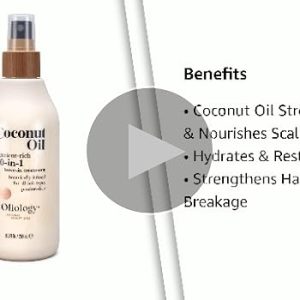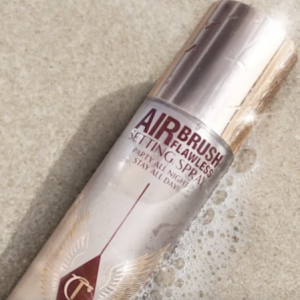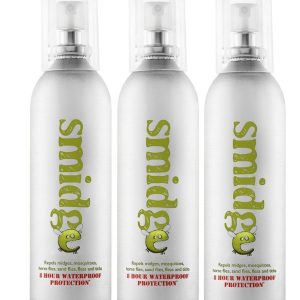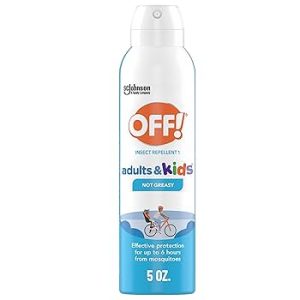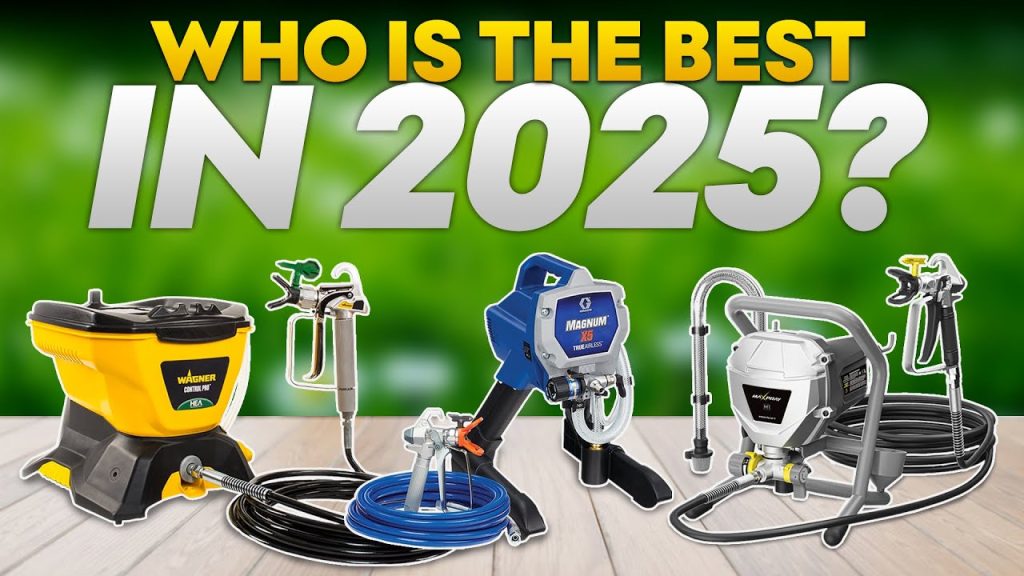
The best airless paint sprayer can transform your painting experience from a tedious chore into an efficient, professional operation. Whether you’re a professional contractor tackling large commercial projects or a homeowner looking to achieve flawless finishes on interior and exterior surfaces, choosing the right airless paint sprayer is crucial for achieving superior results while saving time and effort.
Airless paint sprayers have revolutionized the painting industry by delivering consistent, high-quality finishes at speeds that traditional brushes and rollers simply cannot match. These powerful tools use hydraulic pressure to atomize paint without the need for compressed air, creating a fine, even spray pattern that covers surfaces uniformly. The technology behind airless sprayers allows them to handle thicker coatings and achieve better penetration into surface textures, making them ideal for both residential and commercial applications.
How Airless Paint Sprayers Work: The Technology Behind Professional Results
Understanding the mechanics of airless paint sprayers is essential when selecting the best airless paint sprayer for your needs. These sophisticated machines operate on a simple yet effective principle: they use a high-pressure pump to force paint through a small orifice in the spray tip, creating atomization through hydraulic pressure rather than compressed air.
The heart of every airless sprayer is its pump system, which can be either electric or gas-powered. Electric pumps are typically preferred for indoor projects due to their quieter operation and zero emissions, while gas-powered units offer superior portability and power for large outdoor jobs. The pump draws paint from the container through a suction tube and pressurizes it to anywhere from 1,500 to 3,000 PSI, depending on the model and application requirements.
Key Components of Airless Paint Sprayers:
- High-pressure pump – Creates the hydraulic pressure needed for atomization
- Pressure control system – Allows adjustment of spray pressure for different materials
- Spray gun and tip – Controls spray pattern and material flow
- Hose assembly – Transfers pressurized paint from pump to gun
- Prime/spray valve – Switches between priming and spraying modes
- Suction tube and filter – Draws paint while filtering debris
The spray tip is perhaps the most critical component affecting finish quality. Different tip sizes produce varying spray patterns and flow rates, with smaller tips creating finer atomization for smooth surfaces and larger tips handling thicker materials more efficiently. Professional painters often carry multiple tip sizes to optimize their results across different projects and coating types.
Top Features to Consider When Choosing the Best Airless Paint Sprayer
Selecting the best airless paint sprayer requires careful evaluation of several key features that directly impact performance, durability, and user experience. Professional contractors and serious DIY enthusiasts should prioritize these essential characteristics when making their investment decision.
Motor Power and Pump Performance represent the foundation of any quality airless sprayer. Motor horsepower typically ranges from 0.5 HP for light-duty units to 3+ HP for heavy commercial models. Higher horsepower translates to consistent pressure delivery, especially when spraying thick coatings or operating long hose runs. The pump’s maximum pressure capacity determines the types of materials you can spray effectively, with professional-grade units typically offering 2,800-3,000 PSI maximum pressure.
Maximum Tip Size Support indicates the sprayer’s versatility and material handling capability. Entry-level models may support tips up to 0.015″, suitable for thin coatings like stains and lacquers, while professional units can handle 0.031″ tips or larger for thick latex paints and primers. The ability to use larger tips significantly increases productivity on large projects by allowing higher flow rates without compromising finish quality.
Hose Length and Diameter affect both reach and pressure consistency. Professional-grade airless sprayers typically include 50-100 feet of high-pressure hose, allowing operators to position the pump unit away from the work area. Larger diameter hoses (3/8″ vs 1/4″) maintain pressure better over long runs and reduce pump strain, resulting in more consistent spray patterns and longer equipment life.
Material Compatibility varies significantly between models, with some units designed specifically for architectural coatings while others can handle specialized materials like elastomerics, block fillers, and even light texture coatings. The best airless paint sprayer for your needs should accommodate all the materials you plan to spray without requiring frequent cleaning or component changes.
| Feature | Entry Level | Mid-Range | Professional |
|---|---|---|---|
| Motor Power | 0.5-1.0 HP | 1.0-2.0 HP | 2.0+ HP |
| Maximum Pressure | 2,000-2,500 PSI | 2,500-2,800 PSI | 2,800-3,000+ PSI |
| Max Tip Size | 0.015″ | 0.021″ | 0.031″+ |
| Hose Length | 25-50 feet | 50-75 feet | 75-100+ feet |
| Annual Usage | <50 gallons | 50-200 gallons | 200+ gallons |
Professional-Grade Models: The Best Airless Paint Sprayers for Heavy-Duty Use
Professional contractors demand reliability, performance, and durability from their equipment, making the selection of the best airless paint sprayer critical to their business success. Professional-grade models are engineered to withstand daily use, handle demanding materials, and deliver consistent results across thousands of gallons of coating application.
Graco Ultra Max II 1095 stands as one of the most respected professional airless sprayers in the industry. This powerhouse features a 1.0 HP motor capable of supporting up to 0.027″ spray tips while maintaining consistent pressure throughout long spray sessions. The Ultra Max II’s proven piston pump design has been refined over decades to provide exceptional durability and easy maintenance. Professional painters appreciate its ability to spray unthinned latex paint directly from 5-gallon buckets, significantly reducing preparation time on large projects.
The unit’s SmartControl 1.0 technology automatically adjusts motor speed to maintain consistent pressure regardless of spray tip size or material thickness. This intelligent system reduces motor wear while ensuring optimal atomization across different coating types. The 50-foot BlueMax II hose provides excellent reach while maintaining pressure integrity, and the reversible spray tip system allows operators to clear clogs instantly without stopping work.
Titan ControlMax 1700 Pro represents excellent value in the professional category, offering features typically found in higher-priced units. Its 1.5 HP motor and robust pump system can handle the most demanding architectural coatings while maintaining exceptional pressure control. The ControlMax series is particularly noted for its reduced overspray technology, which can reduce overspray by up to 55% compared to traditional airless sprayers.
Professional contractors frequently cite the Titan’s HEA (High Efficiency Airless) technology as a game-changer for interior projects where overspray control is crucial. This system operates at lower pressure while maintaining excellent atomization, resulting in better material utilization and easier cleanup. The unit includes a 50-foot hose and supports spray tips up to 0.019″, making it ideal for architectural coatings and fine finishes.
Wagner PowerTex 2800 caters to professionals who regularly work with texture coatings and heavy-bodied materials. This specialized unit features a robust 2.2 HP motor and reinforced pump system designed specifically for demanding materials like block filler, elastomeric coatings, and spray textures. The PowerTex can support spray tips up to 0.035″, allowing for high production rates on large commercial projects.
Mid-Range Options: Best Airless Paint Sprayers for Serious DIY Projects
Homeowners and occasional professionals seeking the best airless paint sprayer for regular use will find excellent value in mid-range models that balance performance, features, and affordability. These units typically offer professional-level features at more accessible price points, making them ideal for serious DIY enthusiasts and small contractors.
Graco Magnum X7 has earned recognition as one of the most popular mid-range airless sprayers due to its combination of reliability and performance. The unit features a 0.7 HP motor and proven piston pump that can support spray tips up to 0.017″, making it suitable for most architectural coatings including latex paints, stains, and primers. The Magnum X7’s stainless steel piston provides excellent durability while the PowerFlush adapter allows for easy connection to a garden hose for quick cleanup.
Homeowners particularly appreciate the Magnum X7’s RAC IV tip system, which provides consistent spray patterns and easy tip changes. The included 75-foot DuraFlex hose offers excellent reach for multi-story homes while maintaining pressure stability. The unit can spray directly from 1 or 5-gallon paint containers, providing flexibility for projects of various sizes.
Wagner Control Pro 170 incorporates professional-grade features in a package designed for serious DIY users. The unit’s HEA technology reduces overspray by up to 55% while maintaining excellent atomization, making it particularly suitable for interior projects where mess control is important RAC. The 0.6 HP motor provides consistent performance across a wide range of materials, and the 25-foot hose is adequate for most residential applications.
The Control Pro 170’s variable pressure control allows users to optimize spray pressure for different materials and project requirements. This feature is particularly valuable when transitioning between thin stains and thick latex paints, as optimal pressure settings vary significantly between coating types. The unit includes a detailed instruction manual and video resources, making it accessible to first-time airless sprayer users.
Titan ControlMax 1500 offers excellent value for homeowners seeking professional results without the premium price. This unit features a 0.70 HP motor and supports spray tips up to 0.017″, handling most residential painting tasks efficiently. The ControlMax 1500’s HEA system provides superior finish quality while reducing overspray, making it ideal for indoor projects where precision is important.
Entry-Level Models: Best Budget Airless Paint Sprayers for Occasional Use
Occasional users and first-time buyers seeking the best airless paint sprayer on a budget can find capable units that deliver quality results without breaking the bank. Entry-level models focus on essential features while maintaining reliability for lighter-duty applications.
Wagner Control Stainer 350 specifically targets homeowners focusing on deck and fence staining projects. While not a traditional airless sprayer, this unit uses airless technology optimized for penetrating stains and semi-transparent coatings. The 0.35 HP motor provides adequate pressure for most staining applications, and the 20-foot hose offers sufficient reach for typical residential projects.
The Control Stainer 350’s iSpray nozzle creates consistent coverage patterns specifically optimized for wood staining applications. The unit includes multiple spray tips designed for different stain viscosities, and the lightweight design reduces operator fatigue during extended use. Professional deck staining contractors often use these units for smaller residential projects where full-size airless sprayers would be overkill.
Graco TrueCoat 360 VSP represents the entry point into handheld airless technology. This cordless unit offers surprising capability in an ultra-portable package, making it ideal for touch-up work, furniture finishing, and small interior projects. The variable speed pump allows users to adjust material flow for different coating types, while the 32-ounce FlexLiner system eliminates the need for traditional paint cups.
The TrueCoat 360’s VacuValve technology allows spraying at any angle, including completely inverted, without losing suction or creating spatter. This capability makes it particularly valuable for ceiling work and detailed trim painting. While not suitable for large projects, the unit excels at applications where setup time and cleanup convenience are priorities.
Maintenance and Care: Maximizing Your Best Airless Paint Sprayer Investment
Proper maintenance is essential for preserving the performance and longevity of any airless paint sprayer, regardless of whether you own an entry-level unit or the best airless paint sprayer in the professional category. Regular maintenance prevents costly repairs, ensures consistent spray quality, and maximizes your equipment investment over years of service.
Daily Cleaning Procedures form the foundation of airless sprayer maintenance. After each use session, operators must thoroughly flush the entire system with appropriate cleaning solutions to prevent coating buildup and pump damage. Water-based coatings require flushing with clean water followed by a brief flush with mineral spirits to displace water and prevent corrosion. Solvent-based coatings demand thorough flushing with compatible solvents followed by protective oil to prevent internal corrosion.
The cleaning process begins with relieving system pressure through the gun trigger, then switching the prime/spray valve to prime position. Remove the suction tube from the paint container and place it in the appropriate cleaning solution, then operate the pump until clean solution flows from the return hose. Switch back to spray position and continue pumping until clean solution flows from the gun, indicating complete system flushing.
Pump Maintenance requires attention to several critical components that directly affect performance and longevity. The piston and packing set represent the most frequently serviced items, typically requiring replacement every 50-100 gallons of material depending on coating abrasiveness and cleaning practices. Signs of packing wear include loss of prime, pressure fluctuations, and material leakage around the pump housing.
Regular inspection of pump components should include checking the inlet valve for proper seating, examining the outlet valve for damage or debris, and monitoring packing wear through the sight gauge if equipped. Many professional-grade units include packing life indicators that signal when replacement is needed, helping prevent unexpected downtime during critical projects.
Spray Tip Care significantly impacts both finish quality and equipment longevity. Tips should be inspected regularly for wear patterns, with replacement recommended when the orifice becomes enlarged or distorted. Proper tip selection prevents premature wear, as using tips too small for the material creates excessive pressure that accelerates tip erosion.
The RAC (Reverse-A-Clean) tip system found on many quality airless sprayers allows operators to clear clogs by reversing the tip 180 degrees and pulling the trigger briefly. This feature eliminates downtime and prevents damage from attempting to clear clogs with sharp objects. However, frequent clogging indicates problems with material preparation, inadequate filtering, or worn components that require attention.
| Maintenance Task | Frequency | Time Required | Professional Cost |
|---|---|---|---|
| System Flushing | After each use | 10-15 minutes | N/A |
| Tip Inspection | Weekly | 2-3 minutes | N/A |
| Packing Replacement | 50-100 gallons | 30-45 minutes | $75-125 |
| Complete Service | Annually | 2-3 hours | $150-300 |
| Pump Rebuild | 300-500 gallons | 3-4 hours | $300-500 |
Safety Considerations When Operating Airless Paint Sprayers
Operating the best airless paint sprayer safely requires understanding the significant hazards associated with high-pressure spray equipment. Airless sprayers generate pressures up to 3,000 PSI, creating spray streams capable of penetrating skin and causing serious injury. Professional painters and DIY users must prioritize safety through proper training, equipment maintenance, and protective measures.
High-Pressure Injection Injuries represent the most serious hazard associated with airless spray equipment. The high-velocity paint stream can penetrate skin even without direct contact with the spray tip, with injection pressures as low as 100 PSI capable of causing serious injury. These injuries often appear minor initially but can result in severe tissue damage, infection, and amputation if not treated immediately by medical professionals familiar with injection injuries.
Prevention requires treating the spray gun with extreme respect, never pointing it toward people or body parts, and never attempting to stop leaks or clear clogs with hands or fingers. The gun should include a trigger lock and tip guard, both of which must be used consistently. When not actively spraying, operators should engage the trigger lock and point the gun toward the ground or a safe backstop.
Personal Protective Equipment (PPE) requirements for airless spraying exceed those needed for brush and roller application. Respiratory protection is essential due to the fine overspray mist created by airless atomization. Depending on the coating type and application environment, protection may range from N95 respirators for water-based materials in well-ventilated areas to supplied-air systems for solvent-based coatings in confined spaces.
Eye protection must be chemical-resistant and provide side protection to prevent overspray exposure. Standard safety glasses are inadequate for airless spraying, with goggles or face shields providing appropriate protection. Skin protection includes chemical-resistant gloves, long sleeves, and pants to prevent skin contact with overspray and coating materials.
Pressure Relief Procedures must be followed religiously when performing any maintenance or service work on airless equipment. System pressure must be completely relieved before attempting to disconnect hoses, remove spray tips, or service pump components. Most units include specific pressure relief procedures outlined in the owner’s manual, typically involving triggering the gun with the spray tip removed or using dedicated pressure relief valves.
Ready to Transform Your Painting Projects? Find Your Best Airless Paint Sprayer Today
Investing in the best airless paint sprayer for your specific needs will revolutionize your approach to painting projects, delivering professional results with unprecedented efficiency and quality. Whether you’re a professional contractor seeking maximum productivity or a homeowner pursuing flawless finishes, the right airless sprayer technology will exceed your expectations while saving valuable time and effort.
The airless spray market continues evolving with advanced technologies like HEA systems, smart pressure controls, and improved pump designs that extend equipment life while reducing maintenance requirements. These innovations make airless spraying more accessible and user-friendly than ever before, opening professional-quality finishing capabilities to users at every skill level.
For comprehensive reviews and current pricing on top-rated airless paint sprayers, visit BestAirlessPaintSprayer.com for expert recommendations and detailed product comparisons.
